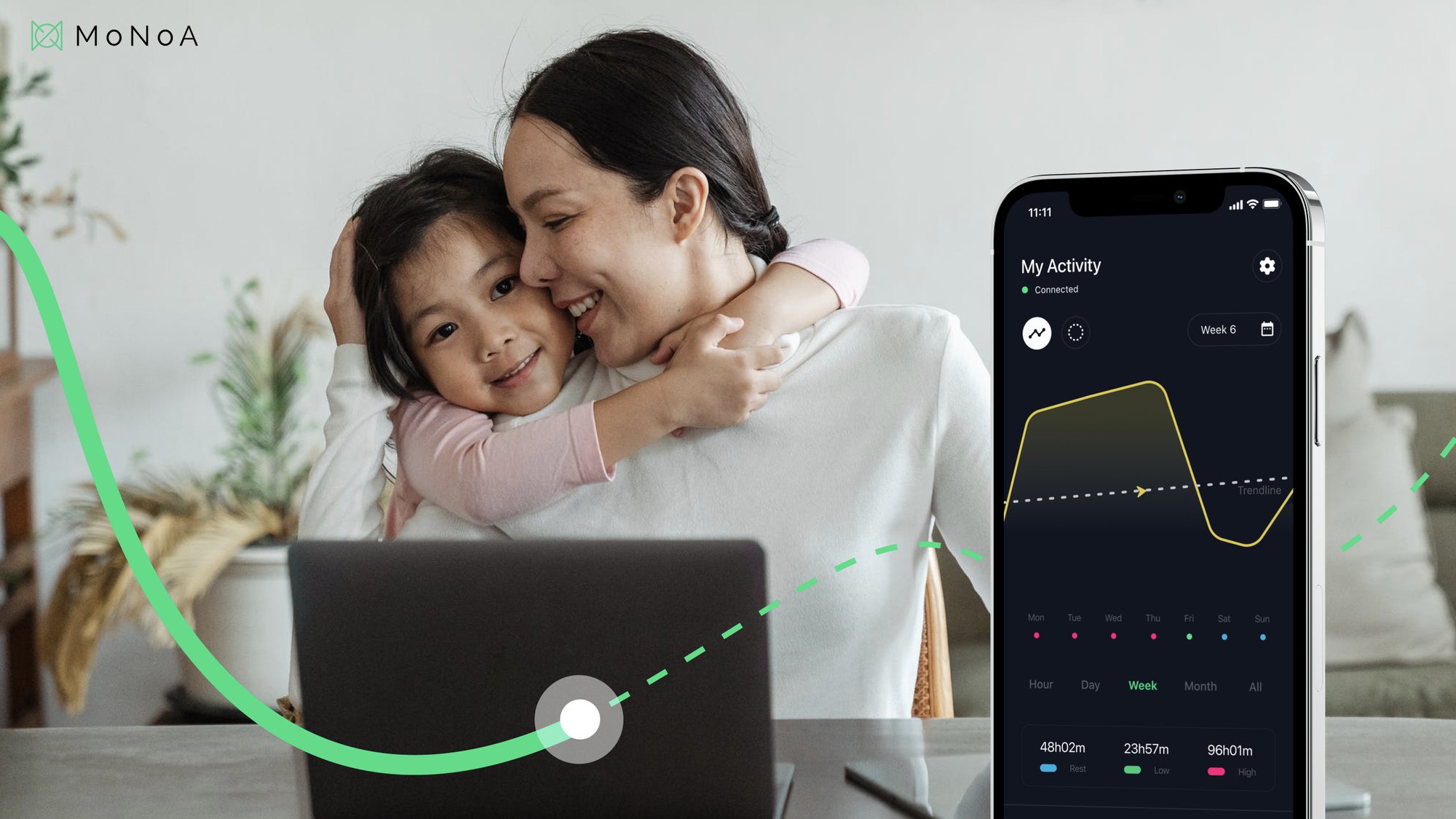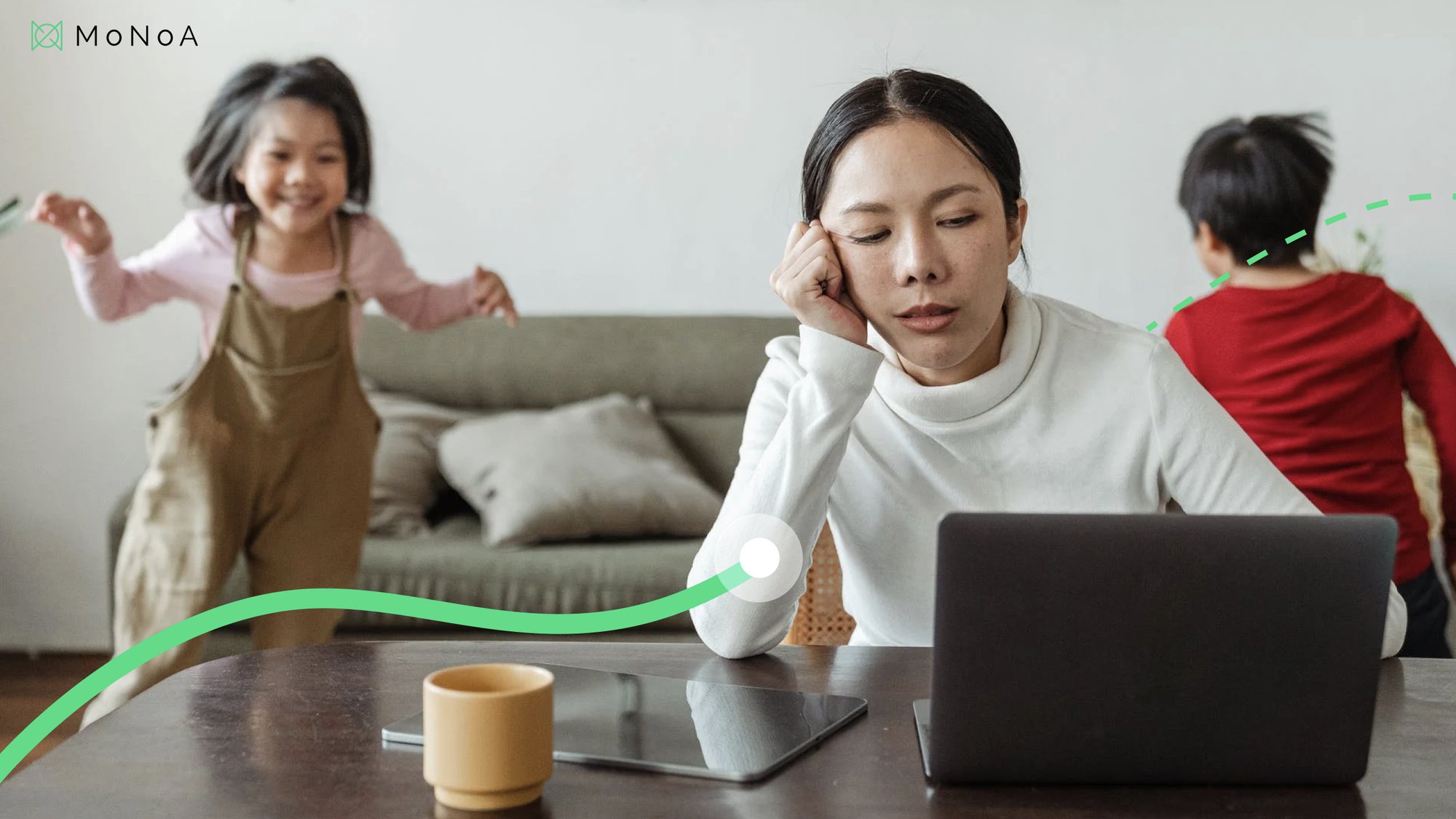Everyone’s life is different, meaning we all experience our own influences that bring imbalance to our bodies. That’s why the data acquired from the MoNoA wearable can be interpreted in different ways and requires some explanation. We do this by describing a day in the life of a 38-year old mother of two children, who works full-time and has many hobbies.
You think about tomorrow while you scroll through Netflix, tired from all the activities you did on the weekend with your family. You go to bed on time but are awakened three times because your youngest son keeps waking up. Once you go back to bed, you have trouble shutting down your thoughts. Thus starting the week with approximately 4 hours of sleep. The first thing you see after turning off your alarm clock is reading an email from a client, saying they have not heard from you last Friday. You jump out of bed and respond within 10 minutes. In the meantime, your two children woke up and they need your help getting ready for school. You rush, make some coffee, and have breakfast with the children. After waving the children goodbye, you turn on your computer for the weekly meetup with colleagues. After some chit-chat, the tone quickly changes when a colleague shares that his contract will not be renewed. Will you be next? You sigh and walk back to the kitchen for your second coffee. And the week has only just begun.

Recovering from imbalance
This short story contains multiple factors that bring imbalance to the body. Imbalances trigger the autonomic nervous system and activate forms of arousal. Experiencing a day like this every now and then is okay. If the rest of the mother’s weekdays start with a good night’s rest and control of the schedule, her body can easily recover from it. However, if this is a ‘normal’ day and she experiences this day after day for a long period of time, it’s unhealthy. There’s no time to recover properly and impossible to sustain long term without consequences (such as fatigue, a higher heart rate, and a chance at burnout).
Is avoiding stress the solution?
Avoiding stress, or trying to live a life without experiencing stress, is not something to aim for. Stress is a part of life. We need stress to stay active, to live and to grow. But after experiencing stress, our body is trying to find ways to regain balance. Understanding how much energy was consumed, which particular activities help you to recover from it, and how much time you need to recover, is the key to change.
How we measure accurate data
You might wonder how we measure stress. Our wearable uses a technology called ‘Galvanic Skin Response’, which provides a visualization of how the autonomic nervous system responds to regain balance. This visualization is collected data, shown as a curved line with an upward and downward movement. When your system is unbalanced, there’s a peak in the line. This peak is detected by sensors that respond to kidney activity, which removes recently produced cortisol (stress hormones) from the body.
Sometimes you might mentally and physically feel different than the data is telling you. Remember that the data is always correct, even when you don’t feel like it. It’s about looking at the data and patterns objectively. We often hear people get stressed when they look at the data and perceive more red colors than their mind and body are telling them. You don’t have to worry or jump to conclusions.
Would you like to read another example to understand the data? Head to our second blog in which we describe the life of a person who works 60 hours a week.
